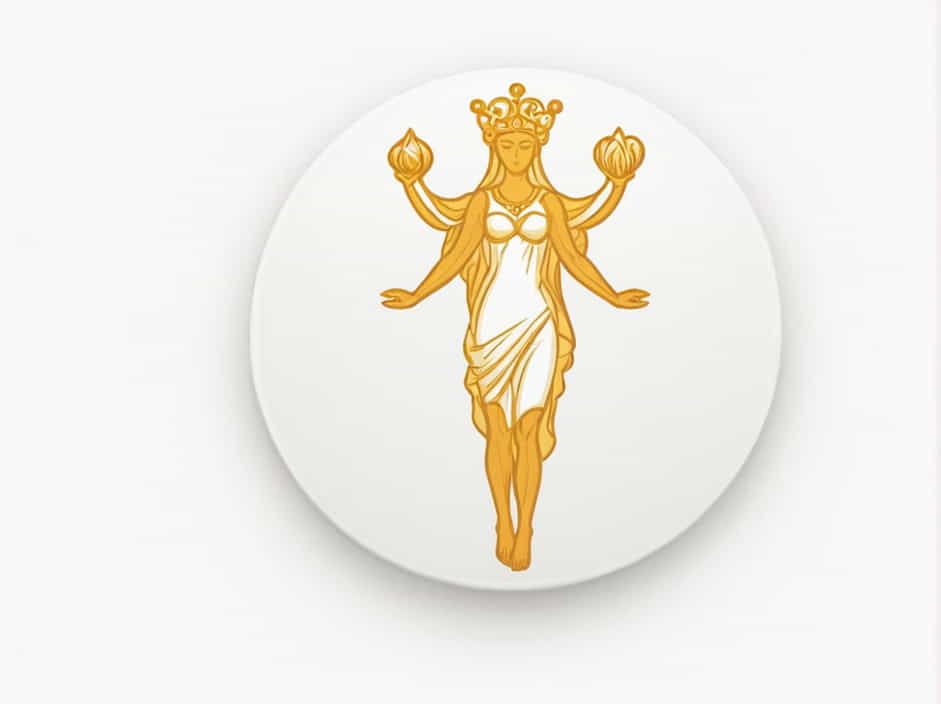Terpsichore is one of the Nine Muses in Greek mythology, known as the goddess of dance and choral song. Her name comes from the Greek words “terpo”, meaning delight, and “choros”, meaning dance. She symbolizes the joy and beauty of movement, inspiring dancers, musicians, and poets throughout history.
This topic explores who Terpsichore is, her significance in Greek mythology, and how she continues to influence dance and the arts today.
Who Is Terpsichore?
Terpsichore is a Greek Muse, a divine being associated with dance, music, and poetry. She is often depicted as a graceful woman playing a lyre, symbolizing her connection to music and performance. Along with her sisters, the other Muses, she was believed to inspire creativity and artistic expression.
The Role of the Muses in Greek Mythology
The Nine Muses were daughters of Zeus, the king of the gods, and Mnemosyne, the goddess of memory. They were responsible for inspiring artists, poets, and musicians. Each Muse had a specific domain:
- Calliope – Muse of epic poetry
- Clio – Muse of history
- Erato – Muse of love poetry
- Euterpe – Muse of music
- Melpomene – Muse of tragedy
- Polyhymnia – Muse of sacred hymns
- Terpsichore – Muse of dance
- Thalia – Muse of comedy
- Urania – Muse of astronomy
Terpsichore’s role was to inspire dance and choral music, ensuring that performances were filled with grace, rhythm, and artistic beauty.
What Is Terpsichore the Goddess Of?
1. The Goddess of Dance
Terpsichore is primarily known as the goddess of dance. In ancient Greece, dance was an essential part of religious ceremonies, theater, and celebrations. People believed that Terpsichore guided dancers, helping them move with elegance and skill.
Greek dances were performed for various purposes, including:
- Religious rituals – Honoring gods and goddesses.
- Theatrical performances – Enhancing plays and storytelling.
- Festivals and celebrations – Bringing joy to the community.
Terpsichore was seen as the divine force behind these dances, inspiring performers to express emotions and tell stories through movement.
2. The Muse of Choral Song
In addition to dance, Terpsichore was also the Muse of choral song. Choral performances were a central part of Greek theater, where groups of singers and dancers performed together to narrate stories.
Greek choruses were featured in:
- Tragedies – Providing background and emotional depth to the play.
- Comedies – Adding humor and commentary.
- Religious ceremonies – Worshiping the gods through music and movement.
Terpsichore’s influence ensured that these performances were harmonious, powerful, and emotionally moving.
3. Inspiration for Poets and Artists
Terpsichore’s inspiration extended beyond dance and music. She also influenced poets, playwrights, and musicians, guiding them to create works that captured rhythm, grace, and expression. Many Greek writers and artists dedicated their works to the Muses, believing that their creativity came from these divine beings.
Even today, Terpsichore’s name is used in the arts, symbolizing the beauty of movement and musical expression.
How Was Terpsichore Worshiped in Ancient Greece?
1. Temples and Sacred Sites
The Muses were honored in temples, shrines, and artistic centers throughout Greece. One of the most famous sites dedicated to them was Mount Helicon, where poets and musicians sought divine inspiration. Another important location was Pieria, considered the birthplace of the Muses.
2. Festivals and Performances
Greek festivals often included dance, music, and poetry competitions in honor of the Muses. The Pythian Games, held at Delphi, featured musical and theatrical performances dedicated to Apollo and the Muses.
3. Offerings and Prayers
Artists, dancers, and musicians often made offerings to Terpsichore, seeking her blessing for their performances. These offerings included:
- Lyres and musical instruments – Symbolizing harmony.
- Poems and songs – Showing devotion.
- Dances and theatrical acts – Celebrating her influence.
Terpsichore’s Influence in Modern Culture
1. Dance and Ballet
Even today, Terpsichore’s name is associated with dance. The term “terpsichorean” is used to describe anything related to dancing. Ballet, modern dance, and folk traditions all carry the essence of Terpsichore’s artistic spirit.
Many dance schools and theaters are named after her, honoring her as a symbol of grace and movement.
2. Music and Performance Arts
Terpsichore’s connection to choral singing and musical harmony remains relevant in opera, theater, and classical music. Many composers and musicians draw inspiration from her legacy.
One famous example is “Terpsichore”, a collection of Renaissance dance music by composer Michael Praetorius, reflecting her influence on European music.
3. Literature and Poetry
Terpsichore continues to inspire poets and writers. Her name often appears in literature, essays, and poetry, symbolizing the creative power of movement and song. Many authors reference her when describing the gracefulness of dance or the rhythm of poetry.
Fun Facts About Terpsichore
- She is sometimes considered the mother of the Sirens, the mythical creatures known for their enchanting voices.
- The word “terpsichorean” is used in English to describe anything related to dance.
- In Greek art, she is often shown seated, holding a lyre, suggesting her deep connection to music.
Terpsichore, the Greek Muse of dance and choral song, has been an inspiration for dancers, musicians, poets, and artists for centuries. Her presence in Greek mythology and culture highlights the importance of dance, rhythm, and artistic expression in human life.
From ancient festivals to modern ballet performances, Terpsichore’s influence can still be seen today. Whether in classical music, poetry, or contemporary dance, her legacy continues to inspire those who seek beauty and movement in art.
